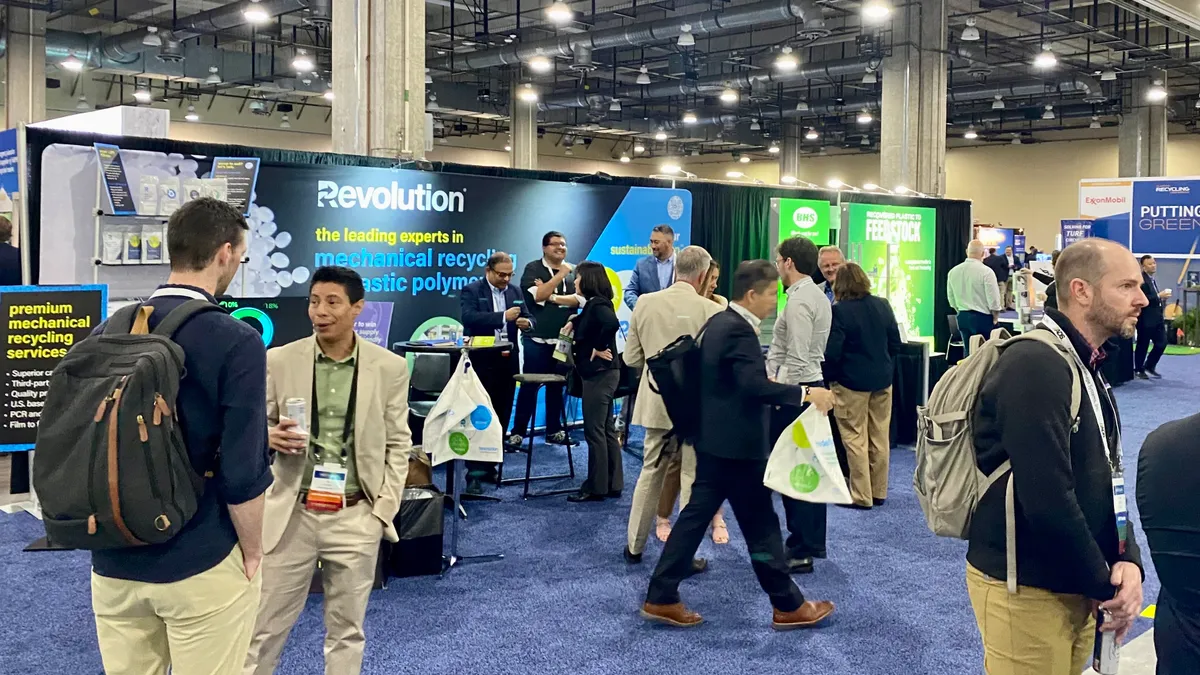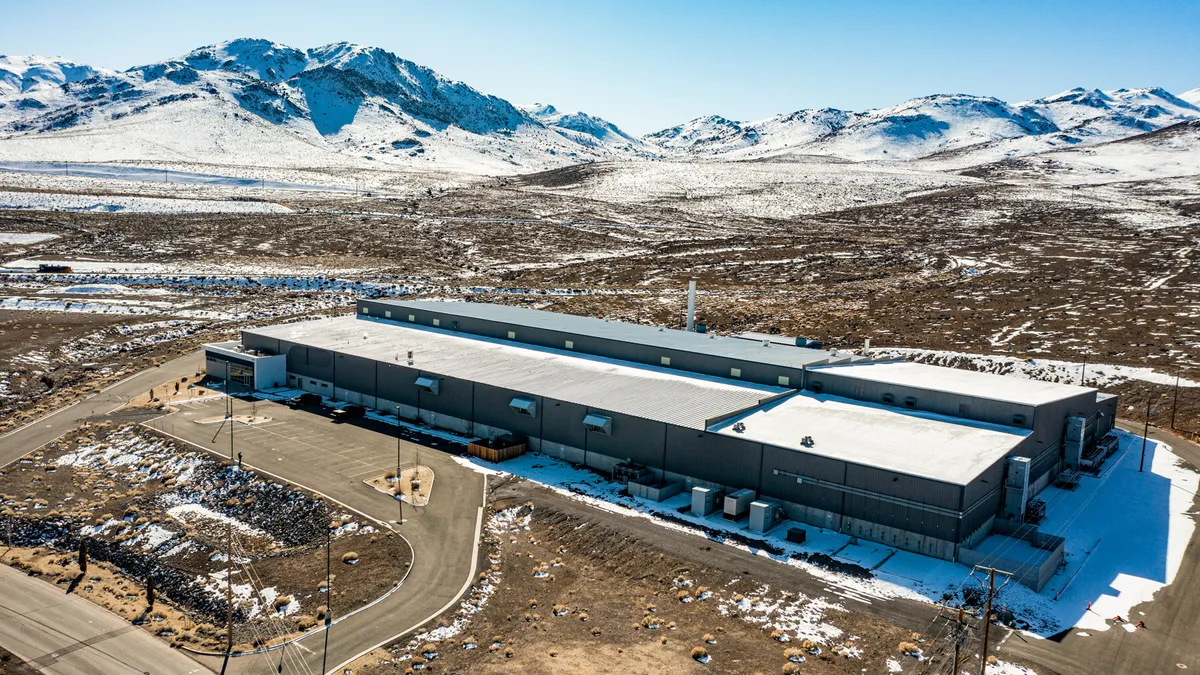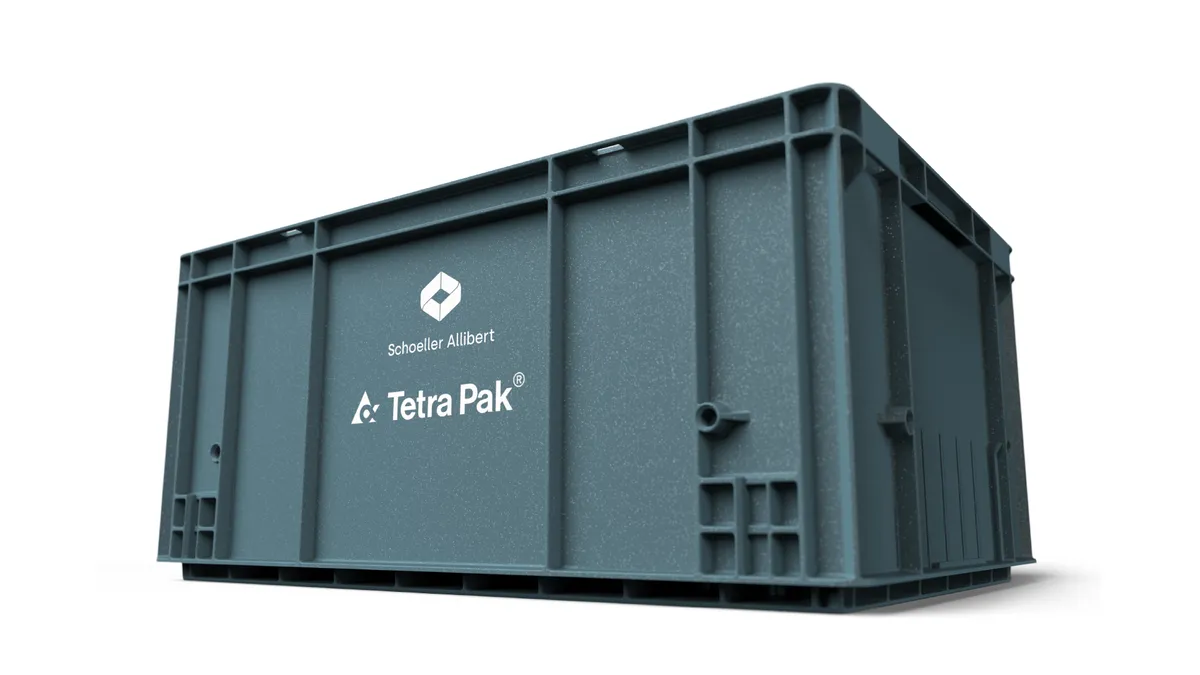The plastics recycling industry is in the midst of major economic, policy and sustainability changes, making it both an exciting and uncertain time, speakers at the Plastics Recycling Conference said last week.
Recycling operators, packaging producers and tech innovators discussed both the business pressures and the positive advancements they hope will help increase recycling and help streamline material supply and demand. “The answer lies within everybody here thinking about what you can do differently, how you can innovate, how you can get started,” said Jon Vander Ark, Republic Services’ CEO, during an opening day panel.
Here are some major themes from the conference, held March 25-27 in Grapevine, Texas:
Legislation won’t fix everything, but it can help scale recycling solutions
Policy and legislation related to extended producer responsibility, bottle bills, labeling laws and recycled content mandates will continue to create major changes in the recycling industry, speakers said.
Throughout the conference, numerous speakers pointed to legislation as a key way to address the apparent mismatch between recycled plastic supply and demand, where recyclers say they have the supply of materials that brands need to meet recycled content commitments, but brands say they cannot find enough supply. Extended producer responsibility may help boost the supply of recycled materials, while minimum recycled content laws can help drive demand, speakers said.
Dylan de Thomas, vice president of public policy and government affairs for The Recycling Partnership, said more states must pass EPR for packaging laws to further scale such change. He pointed to the impact of California’s sweeping EPR bill SB 54, which is currently undergoing the implementation process. “That’s a systemic change that’s animating the whole [recycling] space” and will influence markets throughout the country, he said.
Kate Bailey, chief policy officer for the Association of Plastic Recyclers, acknowledged that policymaking is an “ugly, hard, sausage-making” process. However, the industry in 2024 is poised to use policy as a way to capitalize on changing public attitudes about how to manage plastic waste. “This is our moment. The world is talking about plastic waste and pollution and how to solve this problem at every single level,” she said. “You've got local government, you've got state government, you’ve got global trade negotiations going on. There has never been a bigger moment for our industry to be involved in all aspects of policy.”
During a session on global recycling strategies, local government representatives also advocated for EPR as a way to relieve stress on municipalities and fund better recycling infrastructure.
“EPR will help bring recycling to curbs throughout the U.S., not just in Seattle, San Francisco and L.A.,” said Susan Fife-Ferris, a solid waste planning director for the city of Seattle. “There’s an equity issue in rural America, that they don't have access to just plain curbside.”
Bailey said policy alone won’t solve the recycling industry’s big challenges. Voluntary initiatives and collaborations are still making major strides, too. “But we’re in this position as an industry because economic headwinds are holding us back. So we see policy as a way to scale solutions,” she said.
Recycling for film and flexibles is at a turning point
Another industry hurdle is figuring out what to do with film and flexible packaging, which is a growing segment of the waste stream due to the popularity of such packaging for snacks, e-commerce and other items. While the challenges with these plastics are well-known, speakers said the industry is more motivated than ever to find lasting solutions for recycling these materials.
Republic’s Vander Ark said the company is considering more investments in recovery of flexible plastics. During a panel about the state of the plastic recycling industry, he called it the company’s “next move” but didn’t give specifics on how Republic might approach the process. Chemical recycling could be one of the avenues, he said. “We are looking at flexibles because they are going to landfill. Landfill is a cost.”
The rise of chemical recycling could also influence end markets for such material, speakers said. Kate Eagles, program director for the Association of Plastic Recyclers, offered insights from APR’s new report on the potential of pyrolysis technologies to recycle flexible film packaging, particularly PE from curbside sources, “a very challenging stream” that is expected to increase with time. The report estimates that the total flexible film packaging stream could be 7.1 million tons by 2030, and that pyrolysis could act as a complement to mechanical recycling to manage that load, she said.
U.S. recyclers could also look to Canada to figure out solutions for collecting and managing film plastic. Charles David Mathieu-Poulin of Éco Entreprises Québec said 70% of Canadians have access to curbside recycling for PE-based film packaging, and the country’s evolving EPR laws could influence how much gets collected in the future.
Even as collection increases, both U.S. and Canadian MRFs still have to deal with flexible packaging as an “annoying material” that contaminates paper streams and wraps itself around equipment, he said. More solid end markets could help spur motivation for MRFs to upgrade facilities, he said. Chemical recycling isn’t a market driver in Canada, but could be in the future, he said. “End markets are most important,” especially as a way to recycle flexible packaging back into more flexibles, he said.
Data will drive transparency and innovation
As the industry works to improve all aspects of recycling, transparency and accountability will become more and more important, speakers said.
EPR and other recycling policies are starting to require much more data collection, which will help paint a more clear picture of what material is being collected and where it’s going. Data requirements related to responsible end markets, recycled content, mass balance, bale audits and other applications will become much more common in coming years, speakers said.
That will help keep companies, agencies and governments accountable to major recycling goals, Bailey said.
At the same time, the rise of AI in MRF equipment and trucks will offer a high volume of new data that companies can use to gain operational insights and stay in compliance with local and state regulations, equipment manufacturers said during a panel about robotics.
The federal government, especially agencies like NREL, the EPA and DOE, are also “trying to get a better handle on what all is currently being produced, what will be produced, what maybe shouldn't be produced, and then how do we design an effective recovery system for what will exist,” said Nina Butler, CEO of Stina. The recycling industry should play a vital role in both providing data and providing input on how that data will shape future recycling policy and systems, she said.
Data transparency will also help improve recycling’s image to the general public, especially those “who think recycling is a scam,” said Mac Duncan, strategic sourcing director for Advanced Drainage Systems. Groups who have signed onto major public-facing pledges like the US Plastics Pact may not be on target to reach their recycling and recycled content goals by 2025, but providing transparent data shows a good faith effort, he said.
“I think the reality is if you make a commitment as a publicly traded company, you need to deliver on your commitment.” he said.























